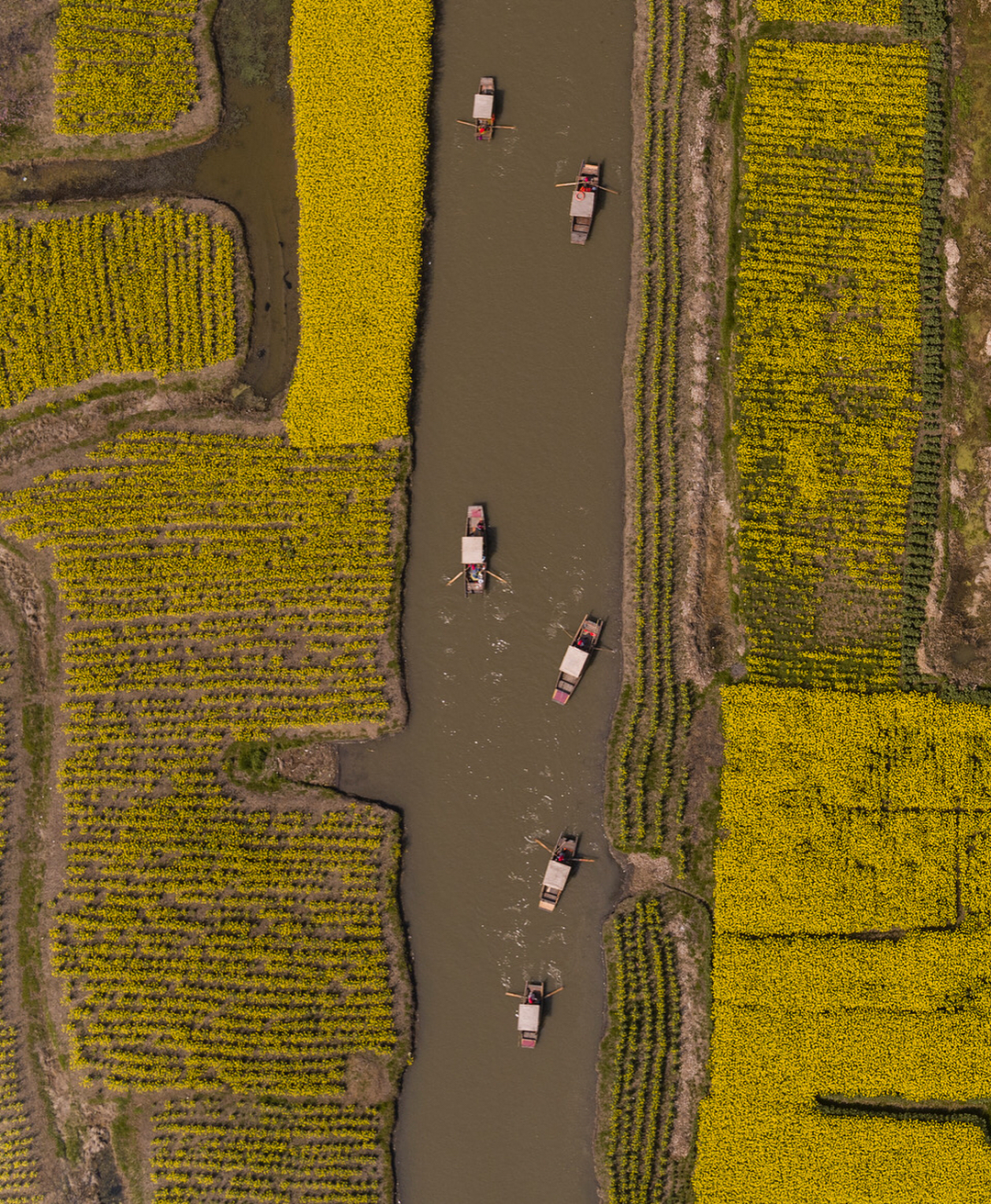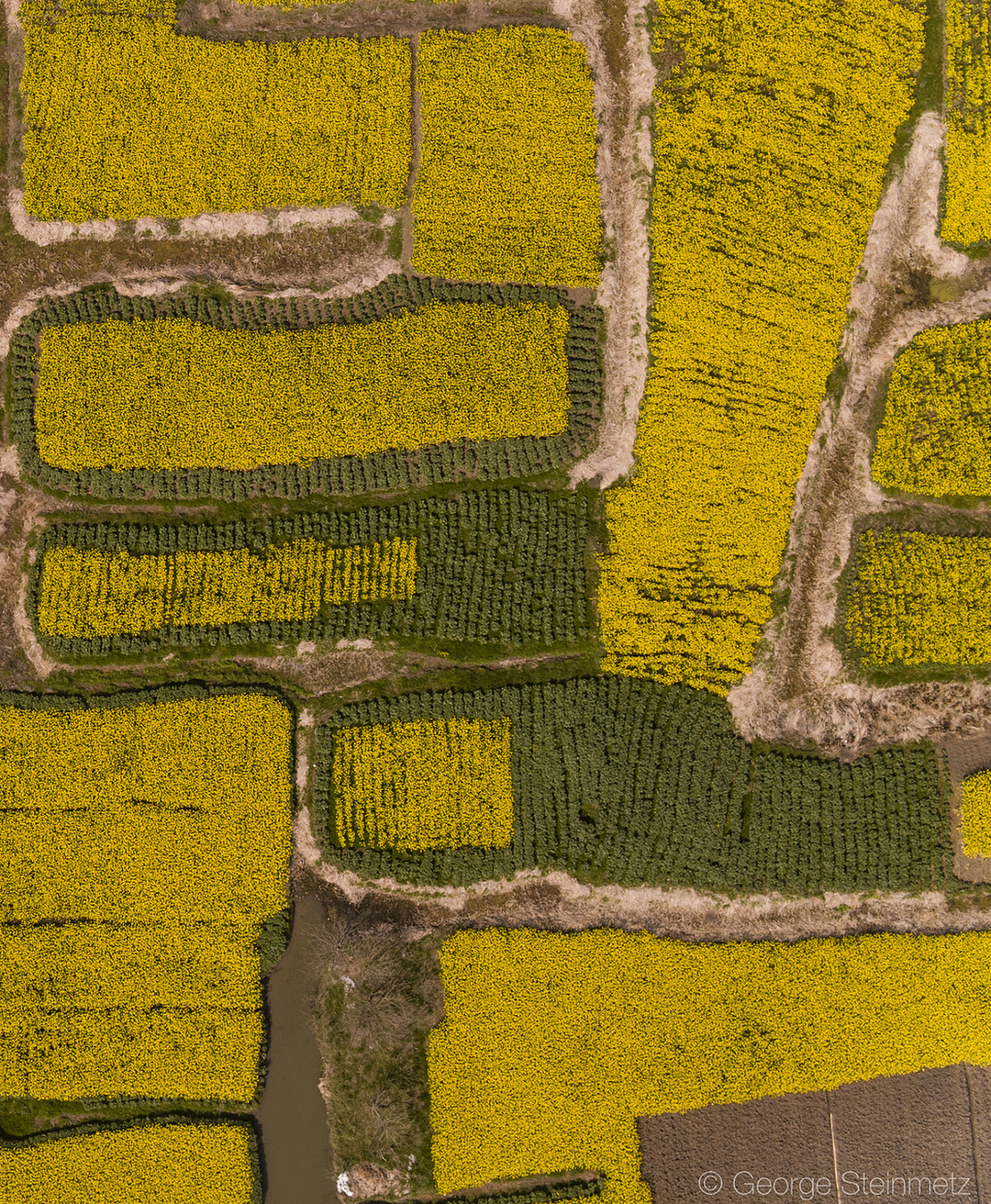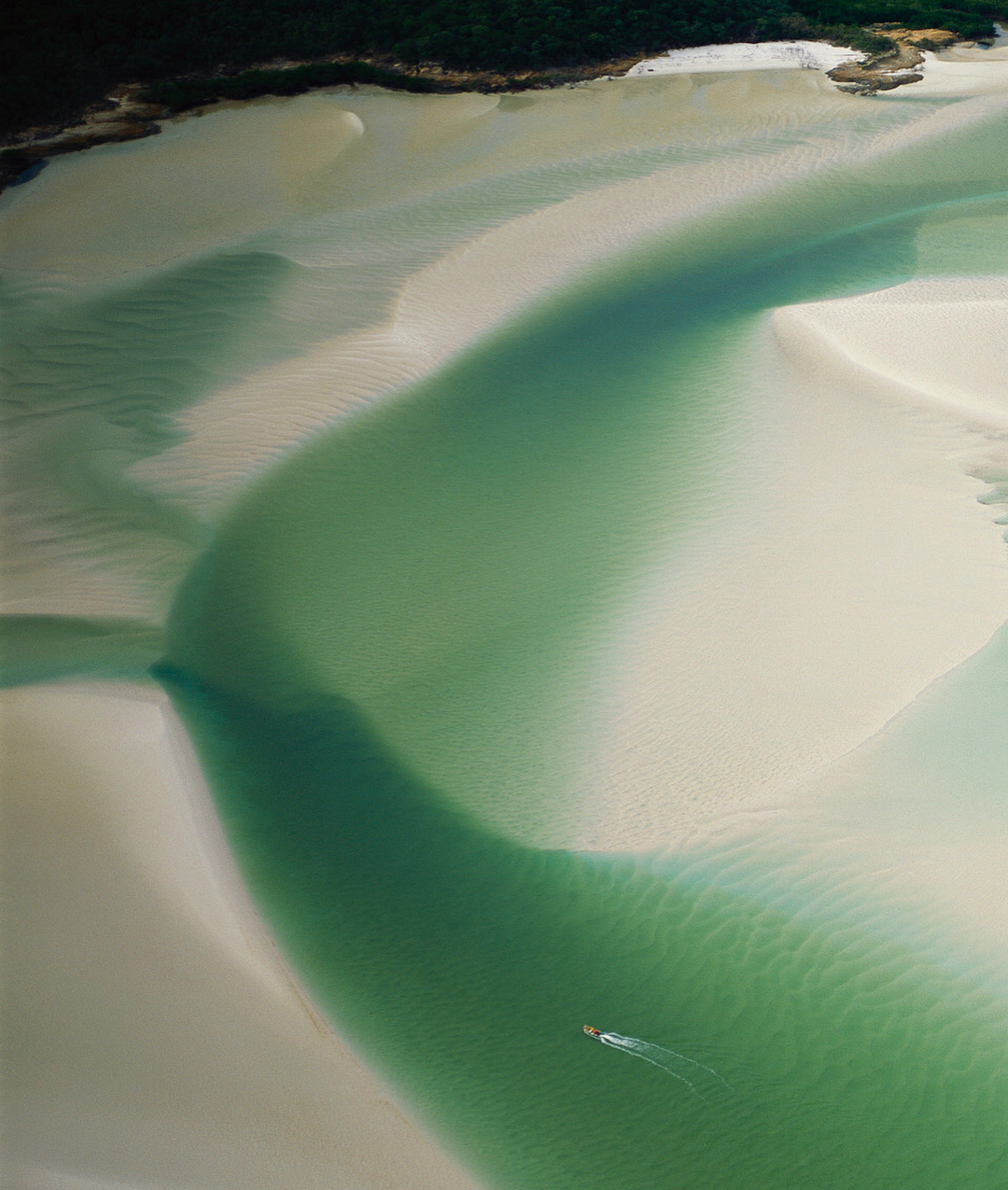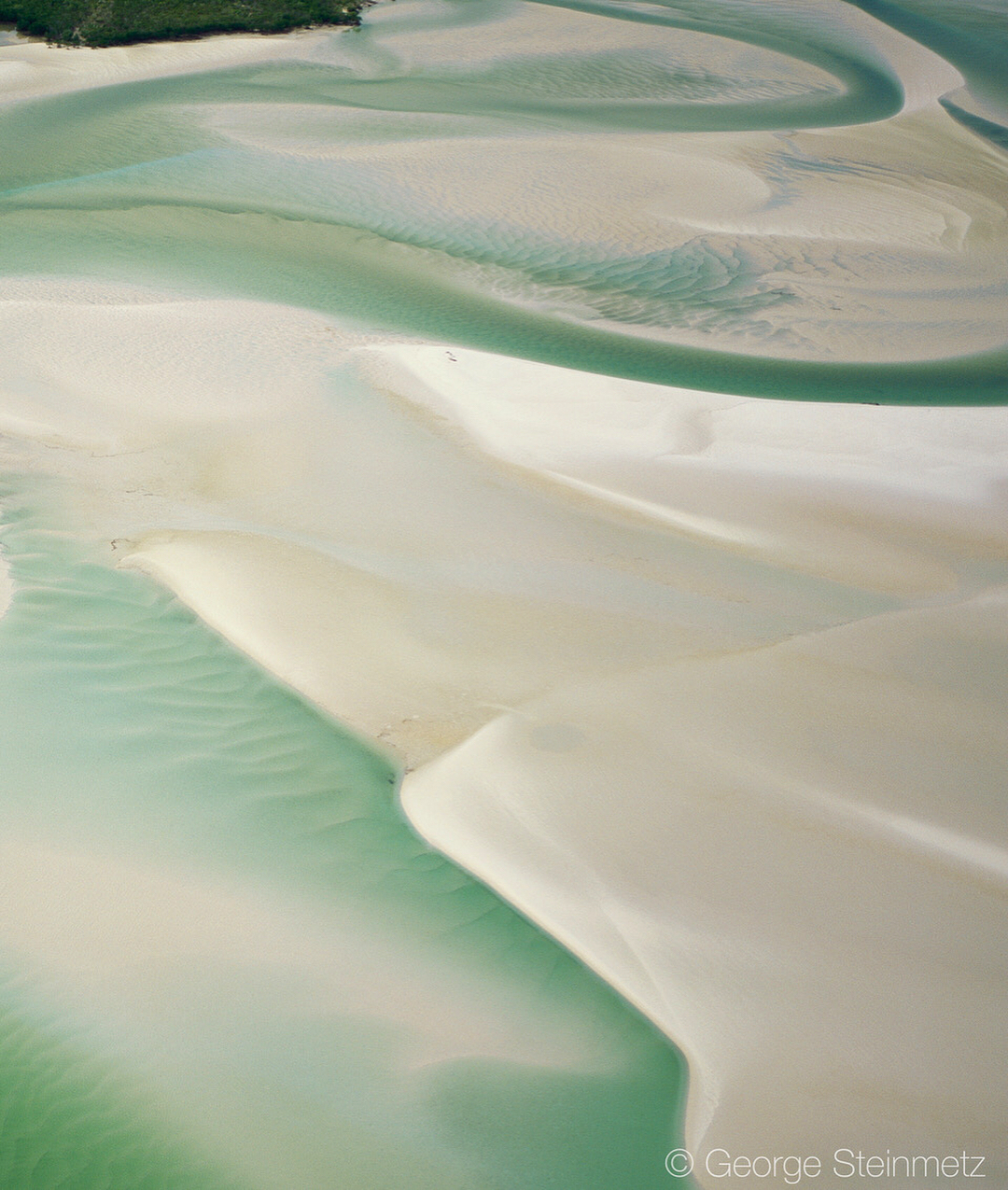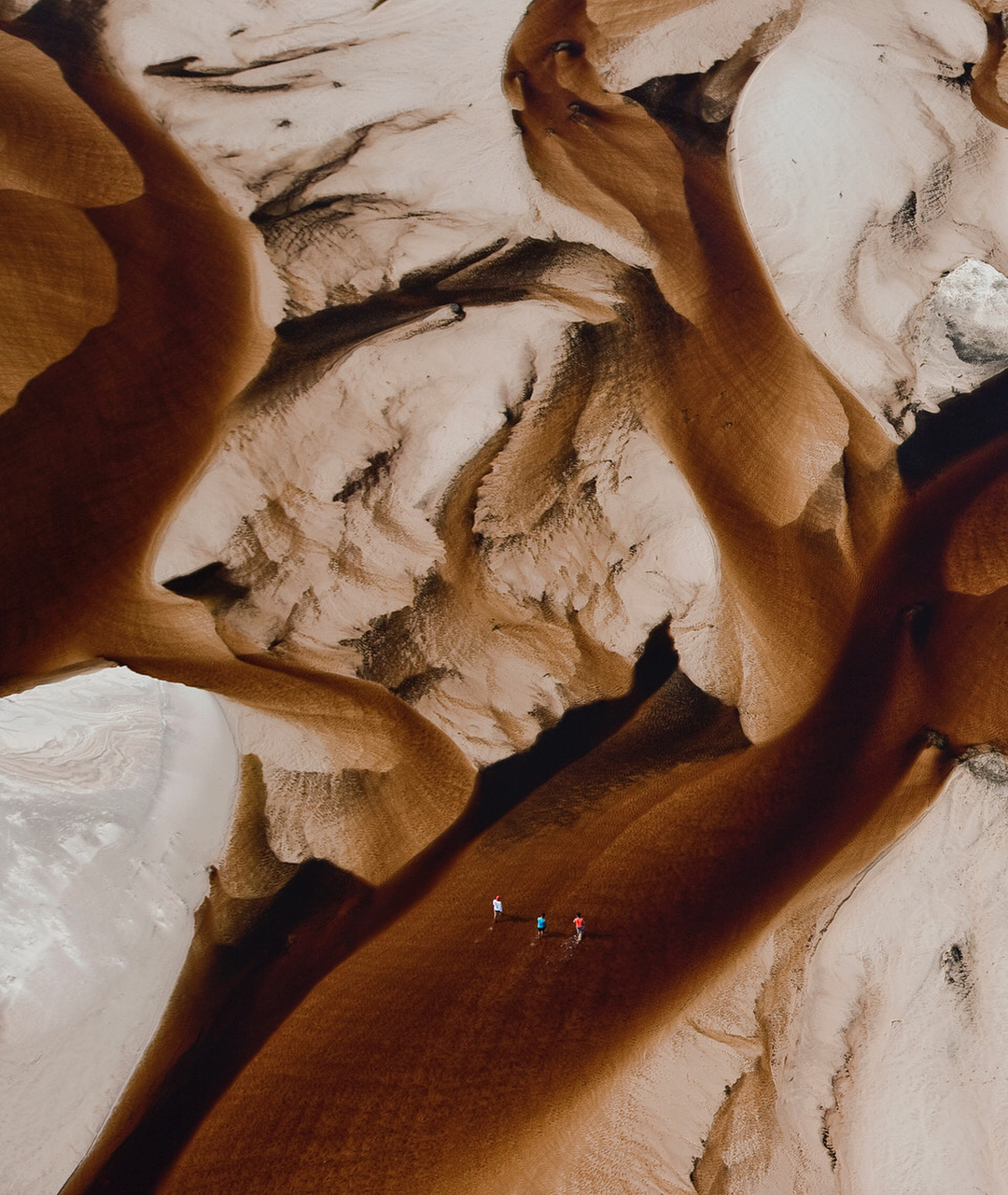George Steinmetz, photo by the Daily Mail.
This week, I decided to do something different. Rather than write up one photograph and what I like about it, I want to discuss and highly recommend the work being done by George Steinmetz. For those who don’t know, George Steinmetz works for National Geographic and The New York Times, specializing in aerial photography. I discussed George briefly a few weeks back, when I lauded an aerial photo from @thearcanetales, and it’s about time he gets the recognition he deserves. This week, I’ve chosen George’s work because it continually inspires me, it’s distinct in its style, and he’s started to use the medium of Instagram in interesting and unique ways.
First and foremost, I’ve steadily fallen in love with aerial photography and George’s photography is largely responsible. A few years back I stumbled across his photographs of New York City, which are simply stunning. My first reaction was, of course, mild jealousy; if only I could fly in a helicopter around New York. But his photographs truly gave me pause because of the way they highlighted a unique view of New York. New York has to be the most photographed location on earth from every angle, and yet George managed to single out unique patterns and shapes in the endless maze of skyscrapers. Obviously, being a National Geographic photographer, I expected high-quality images, but Mr. Steinmetz actually made art; he took something obvious and made it completely his own.
That notion of making the mundane new is exactly what got me into photography in the first place. Stemming from my passion for filmmaking, I always loved the way in which images (moving or still) could make you see things differently. In particular, close-up photographs of the birds of paradise really drew me into wanting to make photographs myself. Aerial photography, when done right, does exactly this. By using a different angle, whether straight overhead or more of a bird’s-eye view, aerial photography can show shapes and imply relationships between objects and spaces that we would otherwise ignore. Much in the same way that improve training can make you rethink all of the uses of a chair, aerial photography challenges viewers to rethink the structure of our planet.
A perfect illustration can be found in a photograph that George posted earlier this week. George shot a scene from rural China, looking directly down on the paddle boats, plots of farm land, and canals. For one standing on the ground, certainly interesting photographs could be made of this landscape. However, they wouldn’t necessarily ask the viewer to rethink what rural China really looks like. They most likely wouldn’t present an angle that hasn’t previously been captured. However, George’s image turns this rural landscape into blocks of flowers, broken up by canals. He reduces the landscape to its most simplistic form, geometric shapes and encourages us to consider the relationship between these blocks. He abstracts from reality without abandoning it. I love that. Whereas some expressionist painters sought to entirely abandon the confines of reality (e.g. later Kandinsky), it’s always been those that incorporated pieces of reality that I’ve found more moving, because it forces the view to consider the nature of reality. How is it that George can create a work that from a glance looks like an abstract painting, but at the same time is composed of entirely human objects (boats, farms, canals)?
What I really find interesting is that George, an established photographer, has started to use Instagram in a very unique way. Last year Instagram introduced the ability to post multiple photos in the same post, one need only to swipe to the right to access the additional photographs. George brilliantly exploits this feature. Rather than shrink his wide aspect ratio photos to fit the square that Instagram allows, George has been to post diptychs, splitting his photographs into two. What I love about this is the way it combines art history with George’s photography and modern technology. Diptychs (and their more famous relative, triptychs) have been used in art since ancient times, falling under the broader category of polyptychs, or multi-panel images. They’ve had a number of uses in art, photography, and movie-making, often adding information to the main subject in the form of alternate perspectives or backstory. In short, the use of additional panels and perspectives sought to engage the viewer in a plurality of ways, encouraging more interaction with the work and the subject. George brings this ancient technique into the modern world by way of Instagram, utilizing the diptych format not to add information per se, but to further encourage engagement with the work. By swiping between one side of the photograph to the other, the viewer takes the perspective of the photographer, scouring the landscape for details and patterns. The viewer uses their fingers to touch and scan the landscape, bringing them into the scene not just optically, but also through touch. George is pushing the boundaries of today’s technology in the same way that every visionary artist has done before, and in doing so created pieces of art that both inspire and engage.
George’s work deserved praise for its innovation and I expect many others will copy his use of diptychs— why stop there; why not tell a flip-book story? George Steinmetz’s work continually inspires me as a photographer, illuminating vantage points and encouraging me to try to replicate not necessarily George’s image, but his way of seeing the world. I hope one day I can meet him, as I’d love to know how he’s perceiving reality when he takes his photos. If you don’t already, I highly recommend following George’s Instagram, as several times a week he posts arguably the best work being done on Instagram.
This last photo is my personal favorite of his. What appears at first to be a painting is actually a photograph of three people wading through water. I'm not often brought to consider buying other photographers' prints, however, this would be one I'd be eager to purchase.

